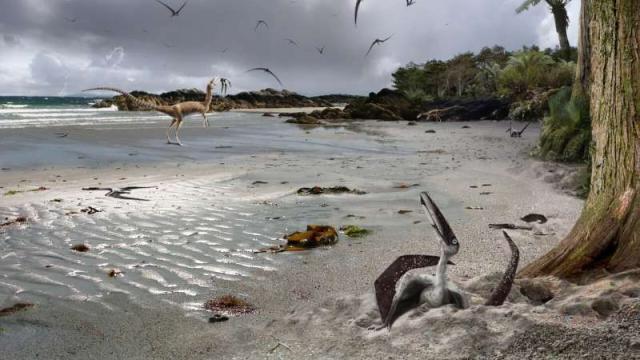New analysis of recent fossil finds suggest that pterosaurs could fly very soon after they hatched, unlike today’s birds or bats.
The pterosaurs were a group of flying reptiles that lived alongside the dinosaurs and included the famous pterodactyls. Humans have been aware of these creatures through fossils for at least three centuries, but researchers have only in the past 15 years started uncovering evidence of their development from eggs into adults.
These finds led to a debate over whether pterosaur wings and bones developed under the care of parents before flight, like today’s flying animals, or whether pterosaurs could fly right after hatching. A new analysis provides evidence that the reptiles developed all of their flight abilities before hatching.
“One mistake we’ve made in the past is to try and interpret pterosaurs in the context of birds and bats,” David Unwin, the study’s first author and paleobiologist at the University of Leicester in the United Kingdom told Gizmodo. “We’ve learned the hard way that doesn’t always work.”
The researchers compiled several lines of analysis in order to make their conclusion. They measured 37 eggs of the pterosaur species Hamipterus tianshanensis, predicted their mass, and compared how much bone had developed in the embryo.
They compared the bone development to modern species of alligators and birds. They also compiled data and measurements from other pterosaur species’ eggs, embryos, and hatchlings. Many of these specimens came from recent fossil finds in Argentina and China.
Past research assumed that the H. tianshanensis eggs in question were in similar stages of development, and were missing bones, implying that these pterosaurs hatched with some bone development left to do and therefore without flying abilities, Unwin explained. But the new analysis demonstrated a large range of sizes, suggesting that the eggs that the researchers were analysing fall along a spectrum where they grow in size, shape, and mass as the embryos develop, Unwin explained.
Based on where these eggs were in their development, and compared to alligators and birds, the pterosaur’s bones actually seemed to be further along, and seemed to already contain some important structures for flight, according to the paper published in the Proceedings of the Royal Society B: Biological Sciences
Taken with other measurements of young pterosaurs, the researchers inferred that pterosaurs developed most of their flying machinery prior to hatching. This was supported by other lines of evidence not included in the paper, explained Unwin, like a surprisingly high number of tiny pterosaurs fossilised in marine environments.
This could mean that lots of young pterosaurs were dying while trying to figure out to fly.
At least one scientist not involved in this study thought its results were convincing. “That paper was super,” David Martill, paleobiology professor at the University of Portsmouth, told Gizmodo. “If you look at flying animals, even precocious birds, their wing skeletons aren’t as developed. Bats’ aren’t as developed. Pterosaurs, they’re developed with the same aspect ratio of adults.”
Another researcher not involved in the study, Edina Prondvai from Ghent University, also found the study’s methods “appropriate and very useful.” But she pointed out that she wouldn’t conclude early flight based on comparison with the selected bird and alligators.
Concluding that would probably require comparison to other precocious birds, like the megapodes, and a better understanding of bone development more generally. She also pointed out that one of the joints was flexible and folded in the egg, but was stiff in most adult pterosaurs in order to provide tension in the wing.
If the study’s conclusions hold true under further scrutiny, the results might have important implications. If pterosaurs hatched without their flight abilities, they would likely require extended parental care like baby birds do. But if they could fly immediately after hatching, perhaps some of them might not have required the same level of care. These small details can be crucial for our understanding of these extinct animals.
It’s a strange picture to imagine. “If they were around today, we’d have pterosaur watchers looking out for babies and adults as well,” Unwin said. “It would make identification lots of fun.”
